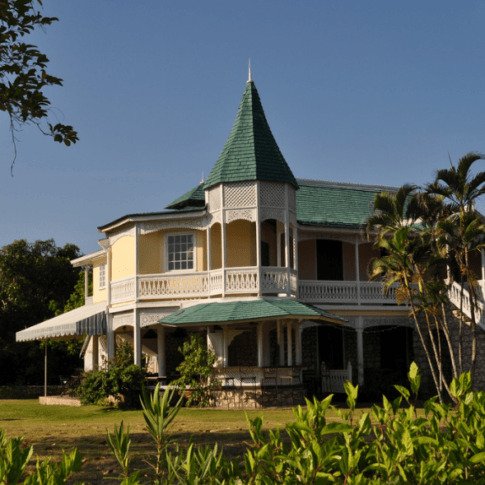How One Jamaican Art Gallery Made Being an Artist Cool

In Jamaica today, art is literally everywhere—from roadside murals and dancehall signs to an abandoned warehouse-turned-art-exhibit.. But only in the last few decades have artists found local support for their talents. In the 1950s, Edna Manley founded the island’s first art school (which would later become the Edna Manley College of Visual and Performing Arts). And in the 1970s, the National Gallery of Art opened in Kingston, bringing the largest art collection within the Caribbean.
Throughout these formative decades, Wales-born art dealer, educator and cultural activist Annabella Proudluck drew inspiration from the rising local arts scene in her adopted Jamaican home. In 1981, she took over a restored 19th century clergy house and founded Harmony Hall. Hidden behind lush trees along the North Coast Highway in Tower Isle, St. Mary’s, the Jamaican-Georgian manse became one of the island’s most prestigious galleries.
Without the Edna Manley College’s focus on formal artistic education, Proudluck showcased the works of self-taught “intuitive” artists, providing them a much-needed platform to gain exposure. Harmony Hall fostered a welcoming space for painters, sculptors, woodcarvers and the like to hone their crafts. In its 30-year history, Harmony Hall has represented hundreds of artists including sculptors Gene Pearson and David Pinto, two of the island’s most prominent sculptors. Today, a colorful mix of international and local artists’ works are on view.
Just a short drive from GoldenEye, Harmony Hall also houses a popular Italian restaurant Toscanini’s. It’s a must-see for visitors looking to experience the arts and culture of Jamaica.
Image source